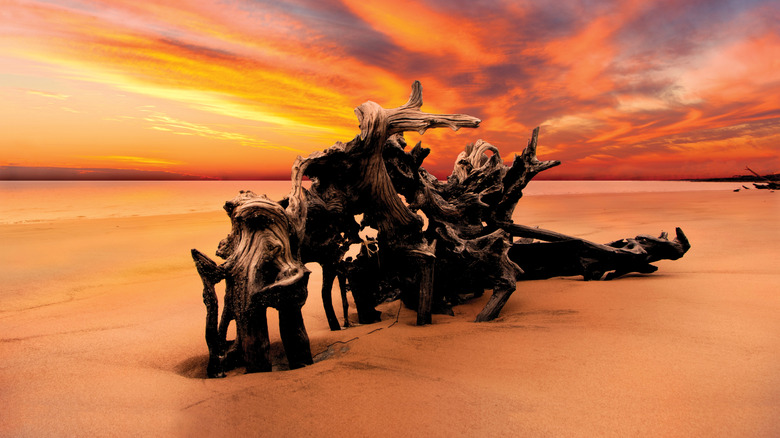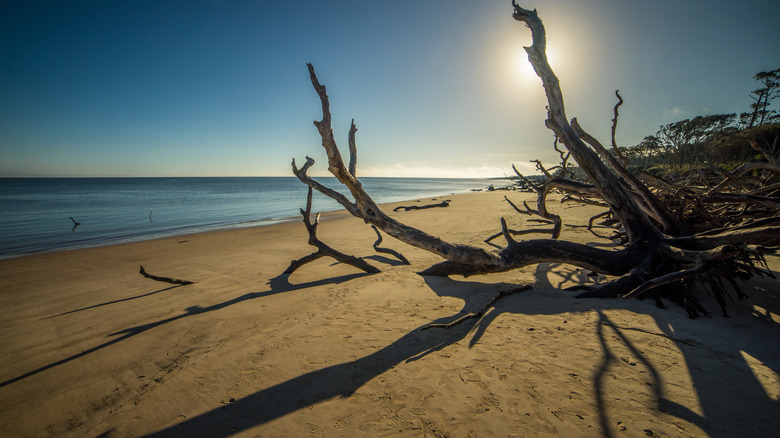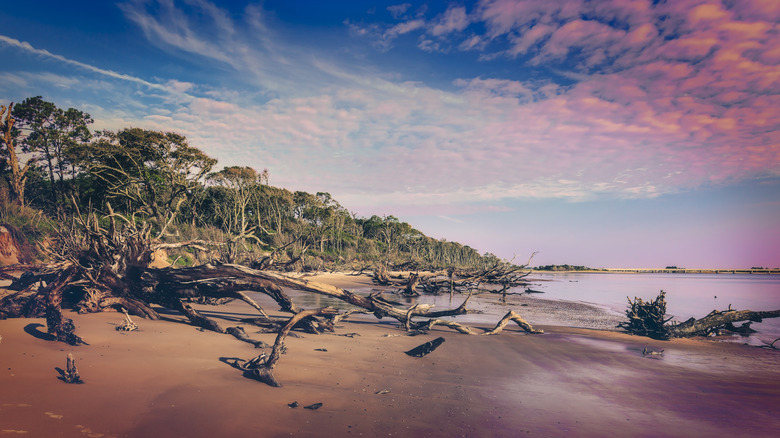One Of Florida's Last Undeveloped Barrier Islands Is A State Park Brimming With Coastal Trails And Wildlife
A Florida state park hidden in plain sight just north of Jacksonville encompasses a wild and ethereal barrier island, where the skeletal remains of giant live oak and cedar trees litter untrammeled beaches and where birders, anglers, and wildlife watchers can find solitude and wonder. Big Talbot Island State Park, just over half an hour by car from Jacksonville along the storied A1A (recently renamed The Jimmy Buffett Memorial Highway after the late bard who sang of Florida countless times), is a wilderness oasis within easy reach of the city, and it's loaded with trails, marshes, and hidden surprises at every turn.
Big Talbot Island State Park is home to the famous Boneyard Beach, a tough-to-find stretch of blond sand where erosion, salt, and tides have taken a toll on a once-flourishing coastal forest. Today, the bleached remains of these once-massive trees is all that's left, and they provide a striking backdrop to one of Florida's most remarkable state parks.
Here, coastal trails wind though still-standing forests, and wild and wet salt marshes stretch to the sea. With their feet in the sand, it's easy to forgive visitors to this lightly visited corner of Florida who forget that the Sunshine State's most populous city is but a quick drive away. In fact, there are several state parks near Jacksonville, including Florida's smallest state park that packs a historic punch and boasts majestic views.
At Big Talbot, it's all about the beaches
Boneyard Beach is likely the most well-known of Big Talbot's beaches, and that's because of its telling name and the bleached "bones" of the long dead trees that once lived on the edge of the encroaching Atlantic. Located on the northeast corner of Big Talbot Island, the beach and its namesake trees can be reached by hiking the Buccaneer Trail over the sand bluffs to the ocean. It's a short walk across a wide, sandy trail, and once there, visitors might think they've entered a completely different planet. Gone are the tall green oaks and cedars that creep up to the ocean. Instead, you'll arrive at a forest that once thrived along the sand but is now in the midst of being reclaimed by the tidal power of the sea.
Visitors can climb the bleached trees and root snags, but only photos and memories can be taken from Boneyard Beach. It's illegal to remove any of the downed wood — the beach and its long-dead sentinels are protected. One word of caution: don't swim here. Some of the downed trees are submerged and not visible, and strong tidal currents are present in Nassau Sound.
Another unique beach in the park is Black Rock Beach. Punctuated by the black rock formations that give the beach its name, it, too, boasts more bleached-out trees. Some might mistake the black rocks for lava, but they're actually made of sand. Visitors can access this beach via a pull-off on A1A just south of the Boneyard Beach access area. From the pull-off and parking area, it's a sandy hike over the bluffs to the ocean. Again, like Boneyard Beach, Black Rock Beach is best enjoyed from the sand, not the surf. The beaches at Big Talbot are unique, even though they may not be among the so-called best Florida beaches.
Wildlife in a wild place
Visitors to Big Talbot State Park with a penchant for birding, wildlife watching, or fishing are in for a treat. This close-to-the-city state park is home to a variety of birds and wildlife — at dusk or at sunrise, visitors to the park are likely to see white-tailed deer, bobcats, raccoons, and opossums. Birders can wander many of the park's hiking and biking trails, or visit the elevated boardwalk at Spoonbill Pond, where they can see wading shore birds and songbirds, all from the shade of a covered birding pavilion.
Anglers visiting the park have lots of options, and fly fishing for redfish, flounder, and speckled trout on the salt marsh flats is becoming more and more popular. The best times of the year for fly anglers to visit Big Talbot Island State Park is during the spring and fall flood tides that push big redfish into the shallows as they forage on shrimp and crabs. Anglers can also rent kayaks and venture into the marsh in search of more fishy targets. In all, Big Talbot Island State Park offers visitors a host of quality outdoor pursuits, and the island ought to qualify as one of the must-visit islands for your Sunshine State trip.


